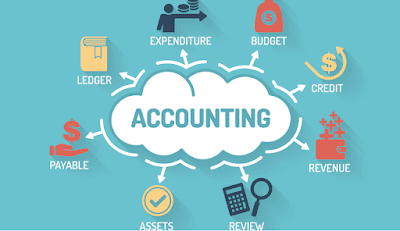ACCOUNT RECONCILIATION OVERVIEW AND HOW IT WORKS?
Accounting is a comprehensive depiction of a company's finances. However, in order to be completely secure, reconciling must be used. Reconciling is an accounting procedure used to ensure that the records of a company's financial transactions are correct and consistent with third-party independent reports.
.png) |
How does account reconciliation work?
A business owner cannot do everything on their own, which is why hiring a firm like Mindspace Outsourcing for accounting services may help. The accounts of the firm would be reconciled by your accountant. Confirm whether the amount that has been reported as leaving the account corresponds to the amount that has been spent. The goal is for the two accounts to be balanced at the conclusion of the reporting period.
Why is reconciliation a reasonable solution?
Reconciliation is a method used by accountants to explain the disparity between two financial records (for example, a bank statement or a cash book). If there are inexplicable variations between the two records, there is a likelihood of a financial discrepancy as a result of theft or misappropriation.
What is the purpose of account reconciliation?
Because the balances in the equity, liability, and asset accounts must be carried forward each year. It highlights the need of having everything correctly reconciled and hence double-checked. This is something that an accounting firm may simply assist you with. During reconciliation, transactions are compared between internally kept information and external records such as bank statements or credit card company statements. If discrepancies are discovered, they cannot be ignored. Properly kept accounts would result in both records tallying in terms of balances. If there is a disparity, it cannot be overlooked since it must be explained when the account's reconciliation statement is generated.
What are the account reconciliation methods?
There are several techniques for performing reconciliations, but the two most common are documentation review and analytics. The most popular choice among these two is documentation review. The account data are pulled up in statements in this technique, and the suitability of each transaction is checked. In terms of the company's transactions, this approach basically analyses if the real amount spent matches the amount reported in the account.
While such detail is not everyone's cup of tea, it is doable with accounts payable outsourcing. For example, the firm's purchase account would be based on receipts for real purchases made by the company. Accountants will initially cross-check the receipts to determine if the amount in the accounts is correct. However, the accountant may notice a mismatch based on the bank statement facts. Some purchases appear to be charged by the bank but go unreported in the accounts. The accountant would look into it more to get to the bottom of the problem. It is conceivable that the business owner who misplaced the bank receipts made an incorrect charge.
The other way, analytics review, is based on past data estimations based on activity level. Thus, estimations of what the real quantity should be are developed, and if there are disparities, the reasons for these must be investigated. Because of the complexities of the work, it is better to have a professional do it for you.


Comments
Post a Comment